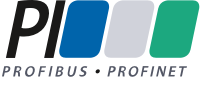NOA
NAMUR Open Architecture (NOA) - Innovation and integration in process automation
The NAMUR Open Architecture (NOA) modernizes the proven automation pyramid of process automation. This pyramid, also known as the NAMUR pyramid, multi-level model or Purdue Enterprise Reference Architecture, has been an established structure for the automation of processes since its publication.
It consists of the following levels:
- Field level (level 1):
This is where the physical interaction with the process takes place via sensors and actuators.
- Process control level (level 2):
This level focuses on stable and reliable automation and plant operation, including the human-machine interface (HMI), taking into account a large amount of data from the field level of strict requirements for real-time capability and system availability.
- Operations control level (level 3):
This is where the processing of condensed and contextualized information takes place, with real-time requirements in the range of minutes or hours.
- Business and logistics systems (level 4):
These include IT systems in which standard, business and logistics processes take place.
As technology advances, functions at these levels can be integrated into higher-level systems, especially for smaller systems.
Nevertheless, the NAMUR pyramid remains a highly available and mature automation architecture in operational practice.
Challenges and opportunities
Traditional automation systems optimized for the process industry are often monolithic and based on manufacturer-specific technologies. This has several disadvantages:
- Delayed implementation of new technologies.
- Need for costly system modernization.
- High demands on reliability and availability, which make rapid changes difficult.
Modern IT innovations such as IoT, Industry 4.0 and cloud computing are developing rapidly and offer immense opportunities. However, implementation in "traditional" process automation is lagging behind. Against this backdrop, NOA was developed to enable a structured convergence of IT and OT systems and to utilize the respective advantages.
Guiding principles of NAMUR Open Architecture (NOA)
NOA combines the advantages of innovative IT developments with existing OT automation systems.The six guiding principles of NOA are:
1. complementary to the existing structure:
NOA solutions complement the proven automation architecture, but do not replace it, making them ideal for integration into existing systems.
2. open for Industry 4.0:
NOA focuses on monitoring and optimization applications, which enables new approaches and business models
3. based on open standards:
NOA relies on interoperability and independence from individual providers through the use of open standards.
4. integration of IT components:
NOA enables the use of less stringent requirements for system components, which facilitates the integration of modern IT technologies.
5. cost reduction per piece of information:
NOA aims to reduce the total cost per piece of information by using innovative monitoring and optimization applications to optimize costs and benefits.
6. maintaining availability and security:
NOA must not jeopardize the stability, availability, security and reliability of existing automation systems.
By introducing NOA, the process industry can benefit from the advantages of digitalization and Industry 4.0 without jeopardizing the reliability and stability of established automation systems.NOA thus offers a forward-looking solution to master the challenges of modern process automation while opening up new opportunities for innovation and efficiency.

